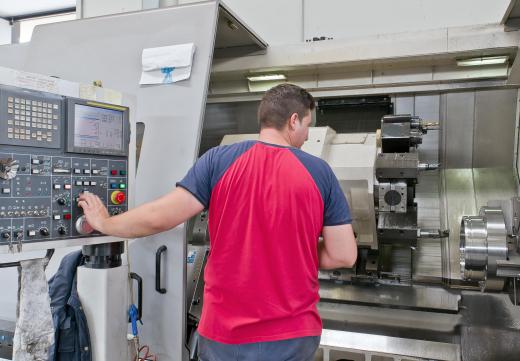Chip formation typically occurs where a machine tool touches the edge of the material being cut. This is part of the Computer Numerically Controlled (CNC) machining process, which usually occurs with milling, grinding, honing, and turning systems in manufacturing. In these techniques, chip formation usually occurs in a similar way. The motion of a tool typically creates a shear plane and, depending on the type of material, the kinds of chips formed can be different. They can be discontinuous or continuous, while a discontinuous chip with built-up edge is another variety; each type is carefully studied because it often affects machine function and end product quality.
The kind of material machined can make a difference in chip formation. Stronger materials generally do not fracture as readily as weaker ones, so chips can peel off in a continuous ribbon. With brittle substances, smaller chips are typically formed, causing more to break off in a particular area.

In brittle materials, discontinuous chip formation is most common, and this can also happen when materials are cut at small angles or at low speeds. The surface finish of the material cut is usually poor in quality, while a continuous chip is often considered to be most efficient in machine cutting. A serrated chip is another type that often forms from metals with mixed shear zones. Continuous chip with built-in edge formation is when metal chips can stick to the cutting tool and even weld to it if there is enough heat. Most common with soft metals, this phenomenon can cause the edges to come loose, possibly damaging the tool and the workpiece.
When edges build up, manufacturers can add lubrication, install sharper tools, or use an ultrasonic vibration system to prevent problems from occurring. A chip breaker is sometimes used, which can be in the form of a groove behind the cutting edge, to prevent chips from sticking to or getting tangled in the tool. Other shapes or devices can deal with the problem of chip formation in machine tools as well.
Chip formation is often studied by manufacturers, especially in machining operations that require more precision. Such analysis can be difficult because CNC machining typically involves a high strain rate, while part or tool material, temperature, and fluids used can have an effect on the analysis and the phenomenon. The tool cutter can also make chip formation hard to analyze, compared to molding processes where the material formation occurs in a contained area.

